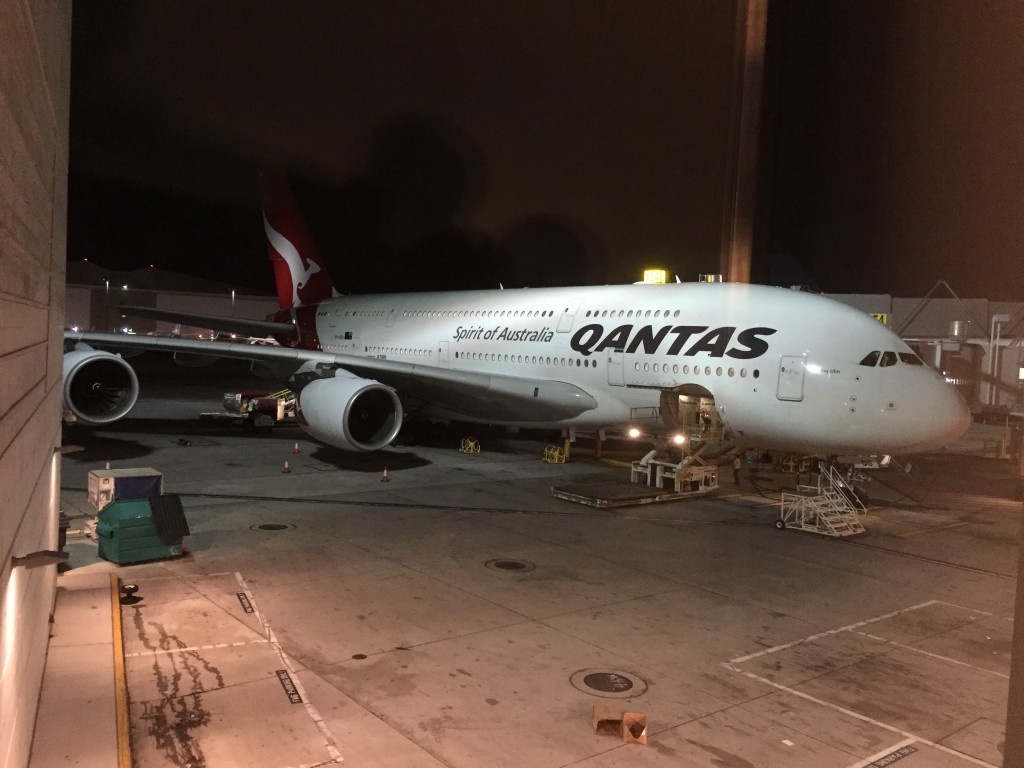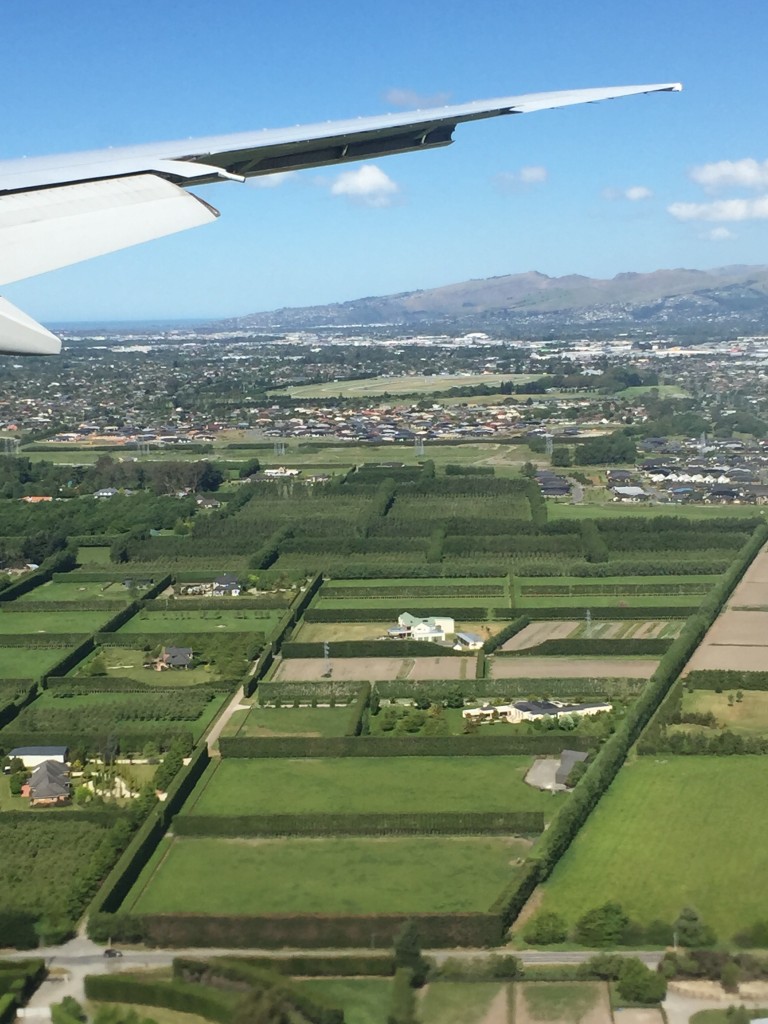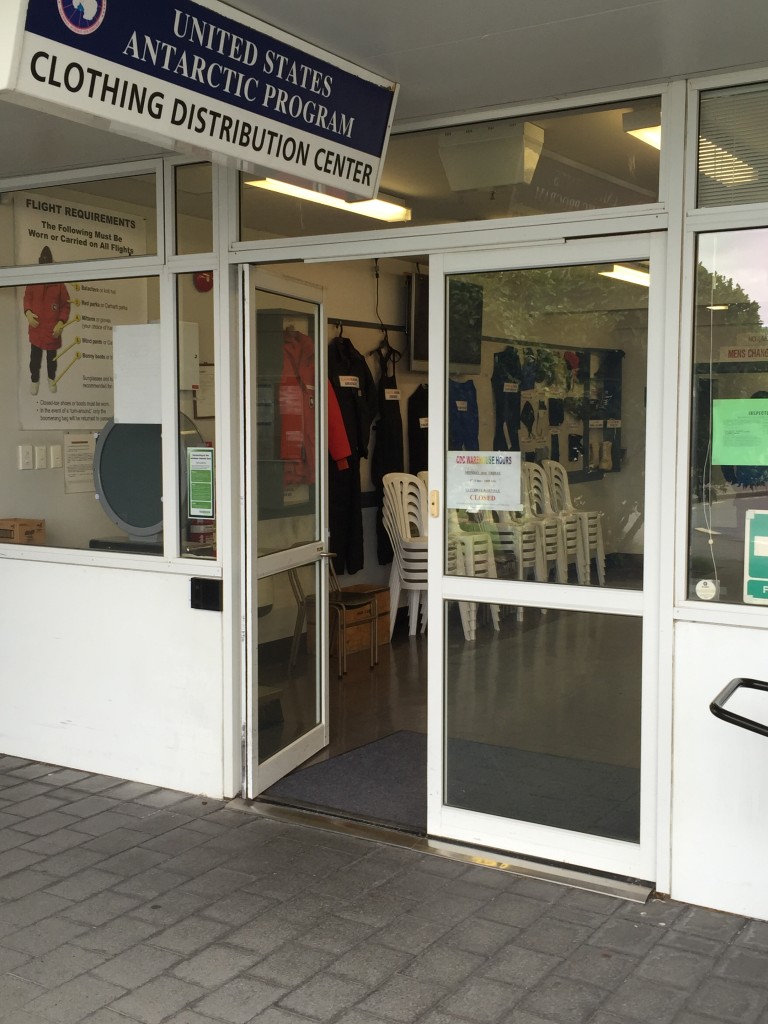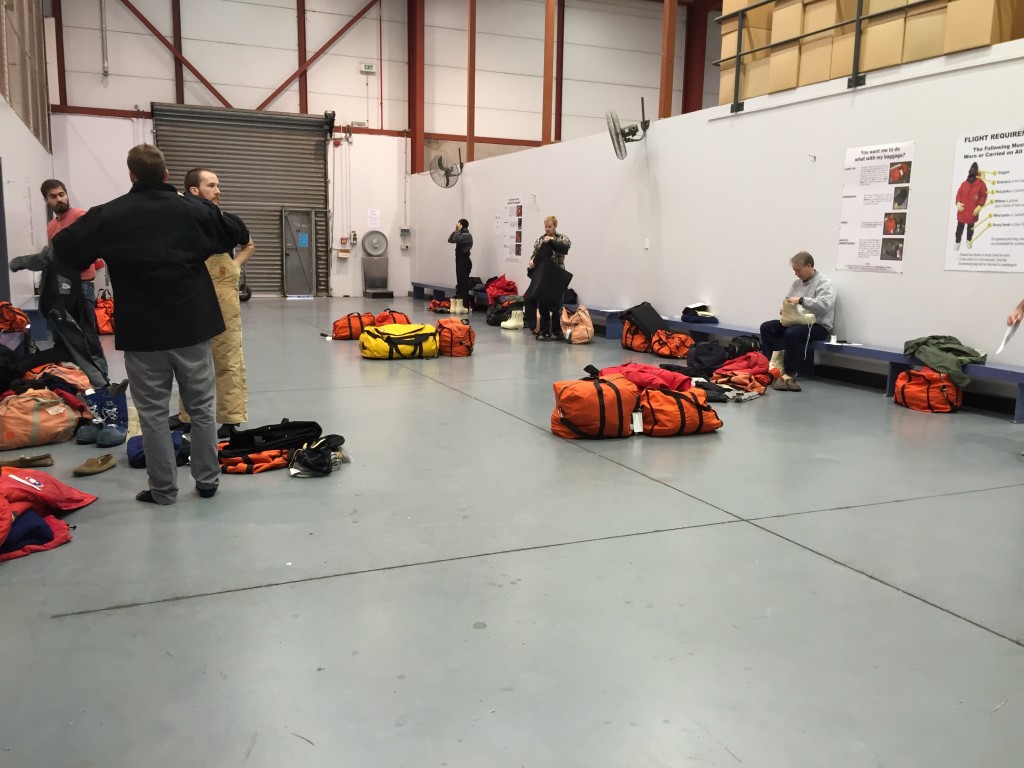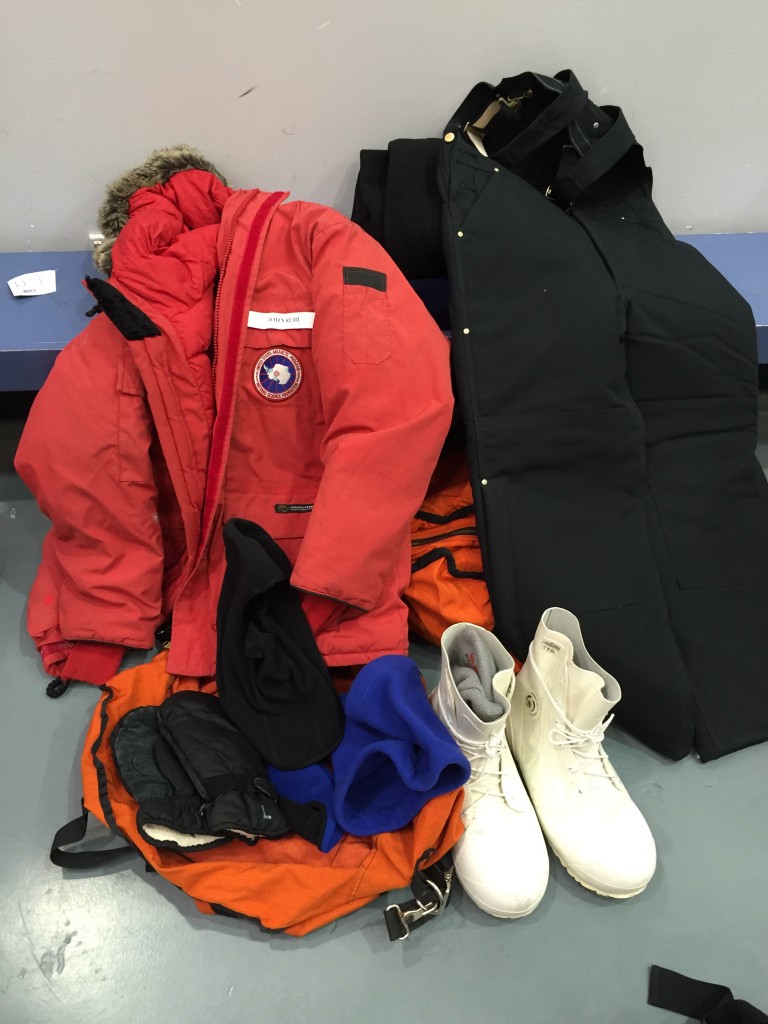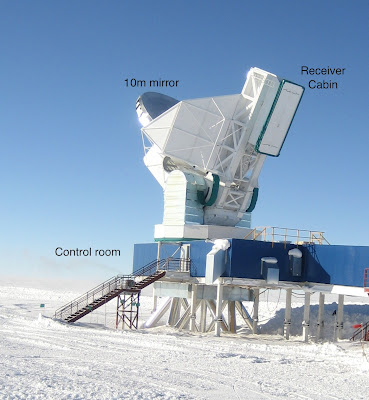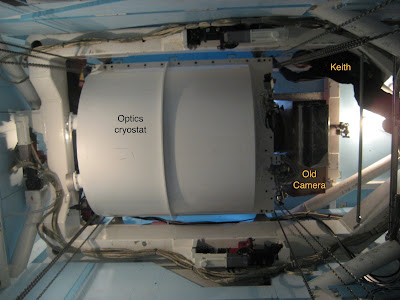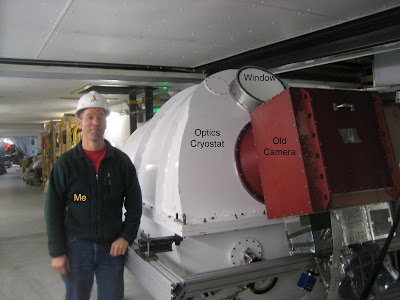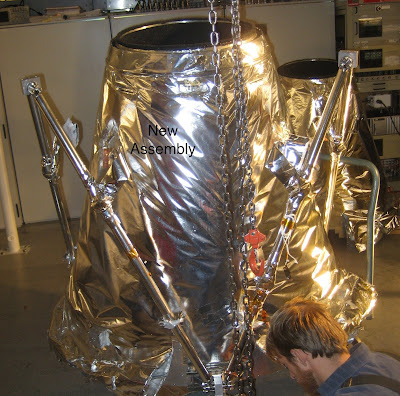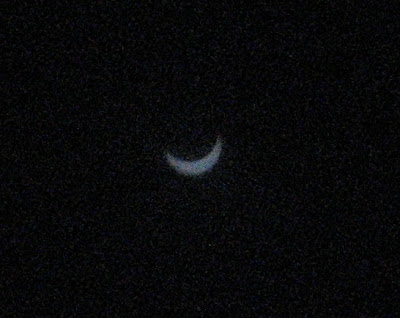We’ve been here at Pole almost two weeks, and I’ve not yet showed you our telescope, or told you what it is that we’re doing here.
The South Pole Telescope (or SPT), shown below, has been observing
the cosmic microwave background for the past 5 years.
The primary mirror is 10 meters, or about 30 feet, in diameter. Light coming from the sky bounces off that mirror and is focused down through a window into the receiver cabin. That’s where the rest of our optics and our camera sit. The receiver cabin is heated, so we can work on all that equipment… but it’s hard to work on it when it’s pointed up in the air. So, we built the control room with a sliding roof and the receiver cabin with doors on its bottom, and we can point the telescope to dock the receiver cabin floor with the control room roof, open all the doors and easily work on things without going outside. Here’s a picture of the telescope docked. The green “boot” seals the cabin to the control room.

When we first arrived here, we stopped observing and pretty much immediately docked the telescope so we could bring the secondary optics and camera down from the cabin into the control room to work on them. We’re installing a new camera this year, and our job is to change some of the optics for that camera. We also put in some new anchors up on top of the cabin to accommodate a new baffle that will be installed later in the season. Here we are working up on top of the telescope, when it was -40F outside, windchill of about -70F.
The circular thing in that picture is the vacuum window of the optics cryostat (which keeps the secondary optics very cold, 10 degrees Kelvin, more on that below), which was still mounted up in the cabin at the time.
Moving inside, here’s a picture taken inside the control room, looking straight up (about 20 feet) at the optics cryostat and the old camera, just as we were about to lower it into the control room.
It took a couple hours, but we got it down from the cabin, into the control room below. Here it is sitting on its cart, ready for us to start working on it.
We then took the camera off the optics cryostat, and opened up the optics cryostat to reveal its guts. Here’s Ken with the cryostat just as we were about to lift out the guts
The big silvery thing is an assembly that includes the 1 meter diameter secondary mirror and some heat shields and black baffles that keep us from getting bad images due to stray light bouncing around inside the cryostat. The heat shields help us cool the secondary mirror and black baffles to 10 degrees Kelvin, just a little above absolute zero.
We took the assembly apart – here’s me with the secondary mirror, and the baffles and heat shields behind me.
Notice that even though I’m inside I’m wearing a warm fleece jacket and insulated overalls – the control room gets pretty cold when it’s windy outside.
We put a new set of baffles and heat shields, which we brought down with us, on the secondary mirror and reassembled everything. Here is the new assembly – you can see the old one in the background.
The alignment of the heat shields with the cryostat, in particular the opening where light goes into the camera, is very critical and tough to make work correctly. Here is a picture of the setup as we are just about to test-fit the new ones into the optics cryosat.
We had to put in and take out the whole assembly (to readjust it) 3 times before we were happy with the alignment. We put it in for the final time the day before yesterday, and right now we’re doing the final “buttoning up” of everything, checking all the wiring, installing optical filters, etc, before we close up the optics cryostat hopefully for the final time.
And, to reward you for reading this far, here is a poor picture, taken with my small “point and click” canon camera through two layers of aluminized mylar (like the shiny silvery stuff helium balloons are made out of) of the solar eclipse (moon passing in front of the sun) we had here two days ago. In this picture the sky appears black – that’s just because I had to use the aluminized mylar to reduce the glare from the sun enough to get a good exposure. In reality, the sky was still very blue, and in fact the brightness level only dipped a little, it seemed… enough that you could comfortably look around without sunglasses, but still a very bright day.
